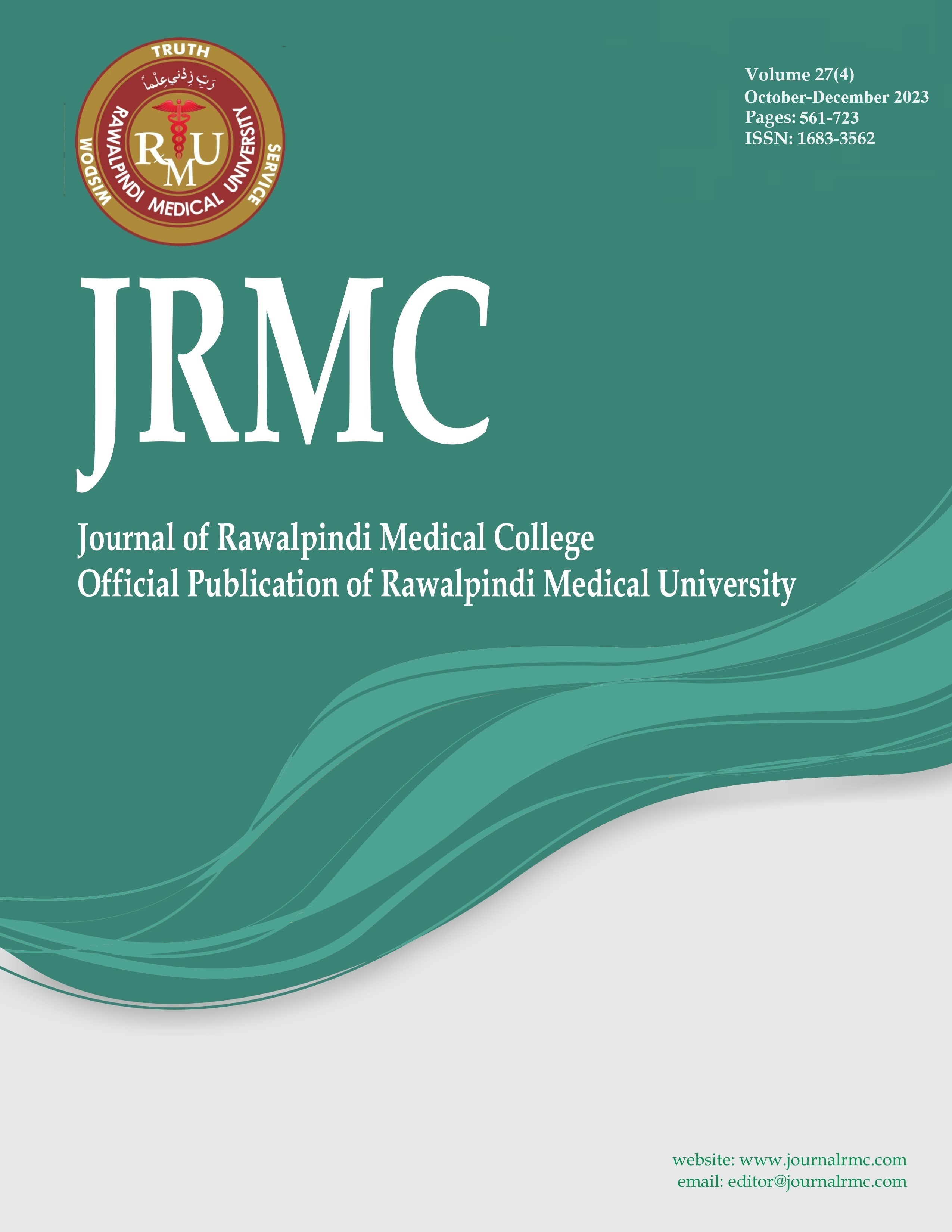Abstract
Objective: This study explored the effect of simvastatin on the histomorphology of islets of Langerhans, glucose and insulin levels in rats.
Study Design: The study was a one-year laboratory-based experimental control trial.
Place and duration of study: It was conducted at Army Medical College Rawalpindi, in collaboration with the National Institute of Health Islamabad and Armed Force Institute of Pathology Rawalpindi.
Methods: A one-year, laboratory-based, two-group experimental control trial was conducted. Thirty rats were assigned to each group: a control group receiving saline injections, and a simvastatin group receiving a simvastatin 60 mg/kg/day. Histological analysis of pancreatic islets, and measurements of blood glucose and insulin levels were performed. Statistical analysis was conducted using independent sample t-tests, with significance set at p < 0.005.
Results: While simvastatin treatment did not affect the number of islets of Langerhans, The area of pancreatic islets of Langerhans was significantly higher in the simvastatin treatment group compared to control (52,664±38,871 μm2 vs 24,643±16,256 μm2, p=0.001). Serum insulin levels were also significantly elevated with simvastatin treatment (21.49±7.03 μIU/ml) compared to control (16.72±5.38 μIU/ml) (p=0.005). There were no significant differences in weekly fasting blood glucose levels at 4 or 12 weeks between groups (p>0.05). These findings suggest potential modulation of pancreatic islet function by simvastatin without affecting glycemic control in this model.
Conclusions: These findings demonstrate that simvastatin treatment significantly impacts the morphology and function of pancreatic islets in rats, increasing insulin secretion without affecting blood glucose levels. Further research is necessary to elucidate the underlying mechanisms and clinical implications of these observations.
Keywords: Simvastatin, islets of Langerhans, Sprague-Dawley rats, insulin, glucose, pancreas.
References
Thiruvengadam NR, Schaubel DE, Forde K, Lee P, Saumoy M, Kochman ML. Association of Statin Usage and the Development of Diabetes Mellitus after Acute Pancreatitis. Clinical Gastroenterology and Hepatology. 2022. DOI:10.1016/j.cgh.2022.05.017.
Ashrafizadeh H, Oroojan AA, Ahmadi I, An'aam M. The Role of Statins (HMG-CoA Reductase Inhibitors) on Insulin Secretion from the Islets of Langerhans: A Systematic Review. Jentashapir Journal of Cellular and Molecular Biology. 2022;13(2). DOI:10.5812/jjcmb-129634
Ward NC, Watts GF, Eckel RH. Statin toxicity: mechanistic insights and clinical implications. Circulation research. 2019;124(2):328-50. DOI:10.1161/CIRCRESAHA.118.312782
Shen L, Gu Y, Qiu Y, Cheng T, Nie A, Cui C, et al. Atorvastatin Targets the Islet Mevalonate Pathway to Dysregulate mTOR Signaling and Reduce β-Cell Functional Mass. Diabetes. 2020;69(1):48-59.DOI: 10.2337/db19-0178.
Qamar A, Hashmi SN, Mushtaq F. Simvastatin Induced Histomorphological changes in skeletal muscle fiber of rats and protective effect of formoterol coadministration. Pakistan Armed Forces Medical Journal. 2019;69(3):605-10. ISSN Online: 2411-8842 Print: 0030-9648
Kundi H, Waseem N, Qamar A, Bilal R, Qureshi S, Yousaf M. Variegation in the Number of Islets of Langerhans in the Pancreas of Rats Fed on Sodium Cyclamate. Pakistan Armed Forces Medical Journal. 2022;72(3):1121-24. ISSN Online: 2411-8842 Print: 0030-9648
Girish V, Vijayalakshmi A. Affordable image analysis using NIH Image/ImageJ. Indian journal of cancer. 2004;41(1):47.
Ogidi X, OI F-OA, Shonubi O, Anani RO. Biochemical study on the effects of Ruzu herbal bitters formulation on Wistar Albino rats. Biomedical Journal of Scientific & Technical Research. 2022;41(1):32434-9. DOI: 10.26717/BJSTR.2022.41.006558.
Gobinath R, Parasuraman S, Sreeramanan S, Enugutti B, Chinni SV. Antidiabetic and Antihyperlipidemic effects of methanolic extract of leaves of Spondias mombin in Streptozotocin-induced diabetic rats. Frontiers in physiology. 2022;13:710.DOI:/10.3389/fphys.2022.870399.
Karpińska M, Czauderna M. Pancreas-Its Functions, Disorders, and Physiological Impact on the Mammals' Organism. Frontiers in physiology. 2022;13:807632. DOI:10.3389/fphys.2022.807632.
Wei S, Li C, Wang Z, Chen Y. Nutritional strategies for intervention of diabetes and improvement of β-cell function. Bioscience Reports. 2023;43(2):BSR20222151.
Batchuluun B, Pinkosky SL, Steinberg GR. Lipogenesis inhibitors: therapeutic opportunities and challenges. Nature Reviews Drug Discovery. 2022;21(4):283-305.
Da Silva Xavier G. The Cells of the Islets of Langerhans. Journal of clinical medicine. 2018;7(3).
Seeberger KL, Salama BF, Kelly S, Rosko M, Castro C, DesAulniers J, et al. Heterogenous expression of endocrine and progenitor cells within the neonatal porcine pancreatic lobes–Implications for neonatal porcine islet xenotransplantation. Xenotransplantation. 2023:e12793. DOI:/10.1111/xen.12793
Demcollari TI, Cujba AM, Sancho R. Phenotypic plasticity in the pancreas: new triggers, new players. Current opinion in cell biology. 2017;49:38-46.
Fernandes Silva L, Ravi R, Vangipurapu J, Laakso M. Metabolite signature of simvastatin treatment involves multiple metabolic pathways. Metabolites. 2022;12(8):753. DOI:/10.3390/metabo12080753
Ji Z, Lu M, Xie H, Yuan H, Chen Q. β cell regeneration and novel strategies for treatment of diabetes (Review). Biomed Rep. 2022;17(3):72.
Townsend LK, Steinberg GR. AMPK and the Endocrine Control of Metabolism. Endocrine Reviews. 2023.DOI:/10.1210/endrev/bnad012.

This work is licensed under a Creative Commons Attribution-ShareAlike 4.0 International License.
Copyright (c) 2023 Abdullah Qamar, Hammad Gul Khan, Hina Kundi, Ayesha Ali, Sumyyia Bashir, Tooba Khurshid





